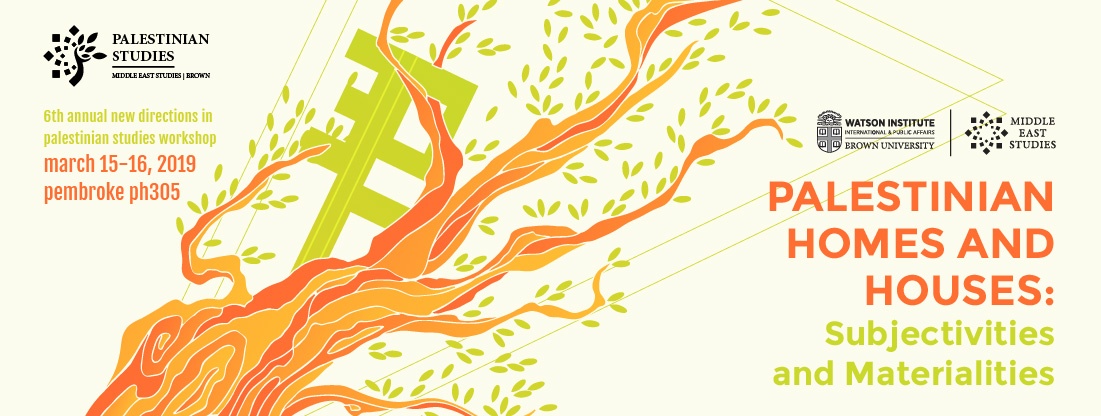2019 Workshop
Palestinian Homes and Houses

The sixth annual workshop of New Directions in Palestinian Studies (NDPS), “Palestinian Homes and Houses: Subjectivities and Materialities,” to be held at Brown University on March 15–16, 2019. As detailed below, house and home are central to Palestinian life past and present, in and beyond historic Palestine.
Venue: Pembroke Center, PH305
By invitation
The 2019 Workshop: Palestinian Homes and Houses
“Home” is a vexed concept for those who share a history of displacement, an experience from which few Palestinians are exempt. Home has often been studied as a discursive field of memory and loss for a geographically dispersed, marginalized, and largely stateless people. But home is also the primary site of social relations, emotional investments, and aesthetic sensibilities. It is the headquarters for quotidian strategies of survival and resistance; and a silent witness to painful secrets, fissures, and the insecurities of permanent impermanence. Whether inhabited, remembered, or imagined, home is the engine room of Palestinian subjectivities.
On the material level, houses are a primary site of capital investment. Their construction, often a product of a lifetime of work and sacrifice, constitutes the core of the built environment. Houses and the built environment, in turn, are shaped by the power relations embedded in property and urban planning regimes; and in the physical infrastructures and networks of energy, water, telecommunications, and the production of building materials. At the same time, Palestinian houses are inextricably linked to relentless processes of demolitions, evictions, and land dispossession driven by the logics of settler colonialism and capitalist transformation within and beyond historic Palestine.
The discursive and materialist dimensions of Palestinian homes and houses raise a host of questions about the politics of daily life. How are houses made into homes and vice versa? What can homes tell us about gender and generational dynamics and the production of “Palestinianness”? How are domestic relations and living arrangements shaped by permit systems that regulate and restrict building, residency, ownership, and marriage? What does home mean in the context of serial displacements and the scattering of family members? What can we learn from variations in design and building material of Palestinian houses across space and time? What can homes and houses tell us about consumption practices and class status of Palestinians in a wide range of settings, from refugee camps in Gaza and Lebanon to unrecognized villages in Israel and planned middle-class neighborhoods in Ramallah; and from the Galilee and the Naqab to Paterson, New Jersey, and Santiago de Chile?
